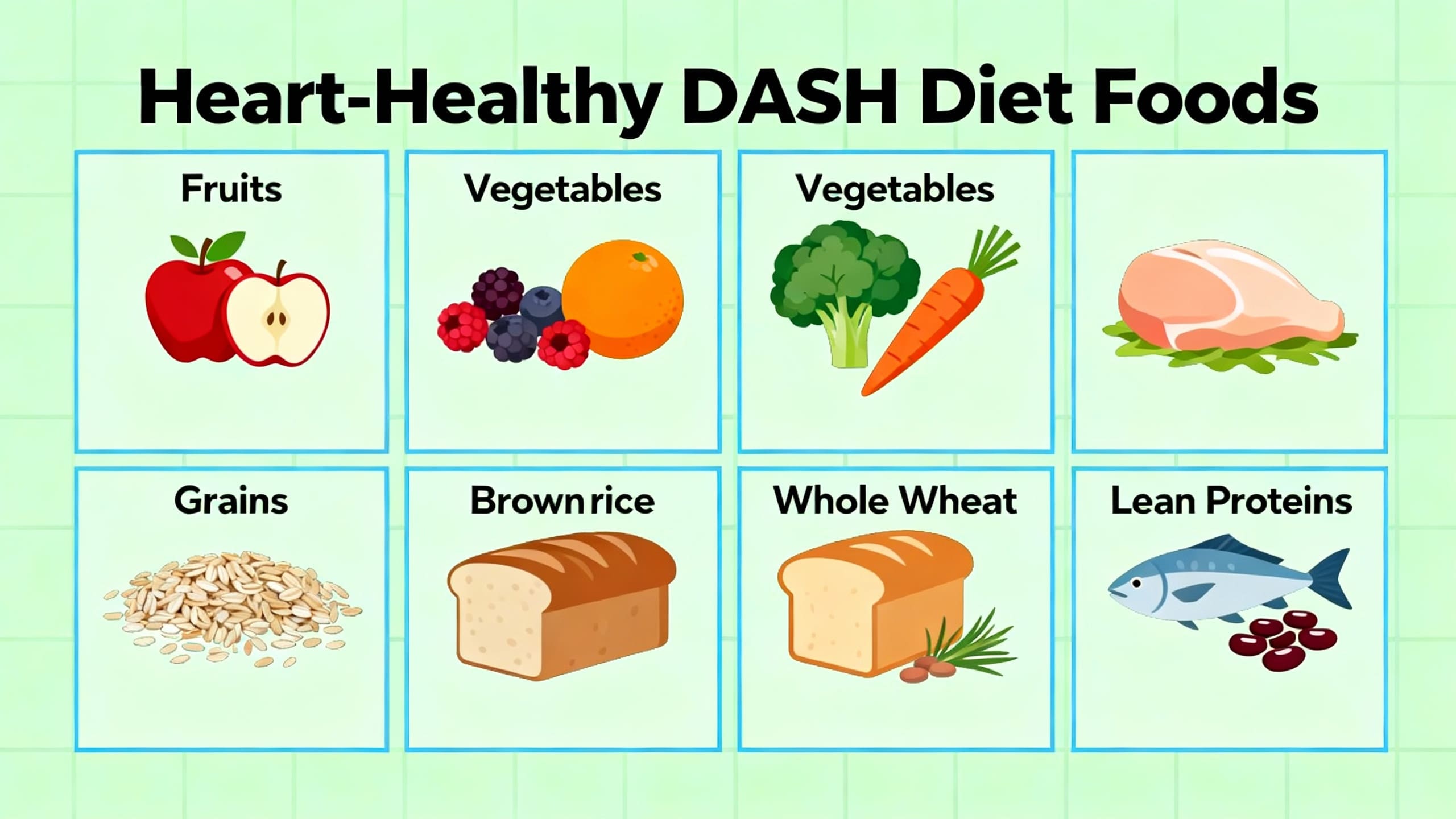Introduction
The DASH diet, renowned for its focus on heart health and the pursuit of an optimal heart, is one of the most recommended dietary patterns for lowering blood pressure and improving cardiovascular outcomes. Centered on nutrient-rich foods—especially those high in potassium and low in sodium—the DASH diet champions balanced meals that help prevent and support the management of heart disease. If you’ve ever wondered how to bring the evidence-based benefits of this eating plan into your daily life, this guide provides practical, budget-friendly grocery lists, meal swaps, and a simple 7-day menu plan. Get ready to make heart health achievable and sustainable without sacrificing taste or convenience.
What is Turn the evidence‑based DASH pattern into practical shopping and cooking with budget‑friendly tips.?
The Dietary Approaches to Stop Hypertension (DASH) diet is a heart-healthy eating plan originally developed to combat high blood pressure (hypertension). Emerging from large, NIH-sponsored clinical trials, the DASH diet emphasizes foods rich in potassium, magnesium, and calcium, while minimizing sodium intake—qualities directly linked to optimal heart health and reduced risk of cardiovascular disease (Sacks et al., 2001). By prioritizing fruits, vegetables, whole grains, lean proteins, and healthy fats, the DASH pattern offers a flexible framework adaptable to various budgets and lifestyles (NHLBI, 2022).
Benefits and Outcomes in Heart Disease
Rigorous studies reveal that following the DASH diet significantly improves heart health by lowering systolic and diastolic blood pressure, an essential step toward an optimal heart (Blumenthal et al., 2010). The diet reduces harmful LDL cholesterol and triglycerides while promoting arterial flexibility, thus decreasing the risk of plaque buildup and clot formation (Sacks et al., 2001). Its anti-inflammatory effects further contribute to heart disease prevention, with robust evidence supporting its role in reducing cardiovascular events and long-term heart failure risk (Siervo et al., 2015).
Research Insights
Decades of clinical research have established the DASH eating pattern as a gold standard for heart health. A comprehensive meta-analysis found the DASH diet can reduce systolic blood pressure by up to 11 mmHg and lower the incidence of cardiovascular events (Siervo et al., 2015). The PREMIER study also documented that combining DASH with lifestyle changes led to even greater improvements in heart disease risk (Appel et al., 2011). More recent evidence confirms that adherence to the DASH diet correlates with decreased inflammation markers and improved arterial health, supporting sustained optimal heart outcomes (Challa et al., 2021). Clinical guidelines from the American Heart Association strongly endorse the DASH pattern as a primary intervention for hypertension and prevention of cardiovascular disease (American Heart Association, 2023).
Practical Applications
Applying the DASH diet at home starts with smart grocery shopping: fill your cart with fresh or frozen fruits and vegetables, low-fat dairy, lean poultry, legumes, nuts, seeds, and whole grains (NHLBI, 2022). Reduce sodium by choosing unprocessed foods and reading labels for hidden salt. Budget-friendly swaps include canned beans (rinsed to lower sodium), frozen berries, oats, and bulk brown rice—each supporting heart health and the optimal heart concept. A typical daily DASH menu provides 4–5 servings of vegetables, 4–5 fruits, 2–3 servings of dairy, and two or fewer servings of lean meats. Adults with high blood pressure or at risk for heart disease benefit most, but virtually everyone can adopt elements of the DASH plan for improved cardiovascular outcomes (Appel et al., 2011). Safe sodium intake is generally <2,300 mg daily—or <1,500 mg if you have hypertension (AHA, 2023).
Risks & Limitations
While the DASH diet is widely safe, rapid dietary changes or potassium increases can cause side effects in individuals with chronic kidney disease or those on certain medications (Siervo et al., 2015). Some people may find the focus on fresh produce challenging on a tight budget or during periods of food insecurity, though frozen and canned alternatives help mitigate this. Further, ongoing research continues to refine optimal intake levels for certain nutrients. Overall, limitations are few, but individualized medical guidance is always recommended (AHA, 2023).
Key Takeaways
- The DASH diet is a proven, flexible approach for enhancing heart health and achieving an optimal heart.
- It lowers blood pressure, cholesterol, inflammation, and cardiovascular risk with practical, budget-friendly food choices.
- Evidence supports its effectiveness for both prevention and management of heart disease.
- Safe and customizable, DASH works for most adults, but consult your doctor for personalized advice, especially with kidney issues.
- Easy swaps and simple shopping lists make healthy living accessible and sustainable.
Frequently Asked Questions
1. Is the DASH diet suitable for people with diabetes?
Yes; the DASH diet improves heart health and may support glycemic control in people with diabetes, due to its focus on whole, minimally processed foods (Appel et al., 2011).
2. Can I follow DASH if I have food allergies or dietary restrictions?
Absolutely; the DASH diet is highly adaptable and can accommodate allergies or preferences (such as dairy-free or vegetarian) while still promoting optimal heart health (NHLBI, 2022).
3. How quickly will I see results for blood pressure?
Significant blood pressure improvements may be seen in as little as two weeks with strict DASH adherence, supporting rapid heart health benefits (Blumenthal et al., 2010).
4. Can children benefit from the DASH diet?
While designed for adults, its principles (less sodium, more potassium/produce) can safely promote optimal heart development in children, but with age-appropriate portions (AHA, 2023).
Suggested Links
- American Heart Association – DASH Diet
- National Heart, Lung, and Blood Institute – DASH Eating Plan
- PubMed DASH Diet Research
Conclusion
Embracing the DASH diet is a practical, evidence-backed strategy for achieving heart health and an optimal heart—at any age or stage. With its clear benefit to blood pressure, cholesterol, and long-term cardiovascular outcomes, DASH empowers you to take control of your well-being through simple, tasty choices. Start with a manageable grocery list, explore recipe swaps, and use the included tips to make heart-healthy eating both sustainable and enjoyable. If you have special medical needs, consult your healthcare provider to tailor the DASH approach safely. Your journey to an optimal heart begins with the next meal!



